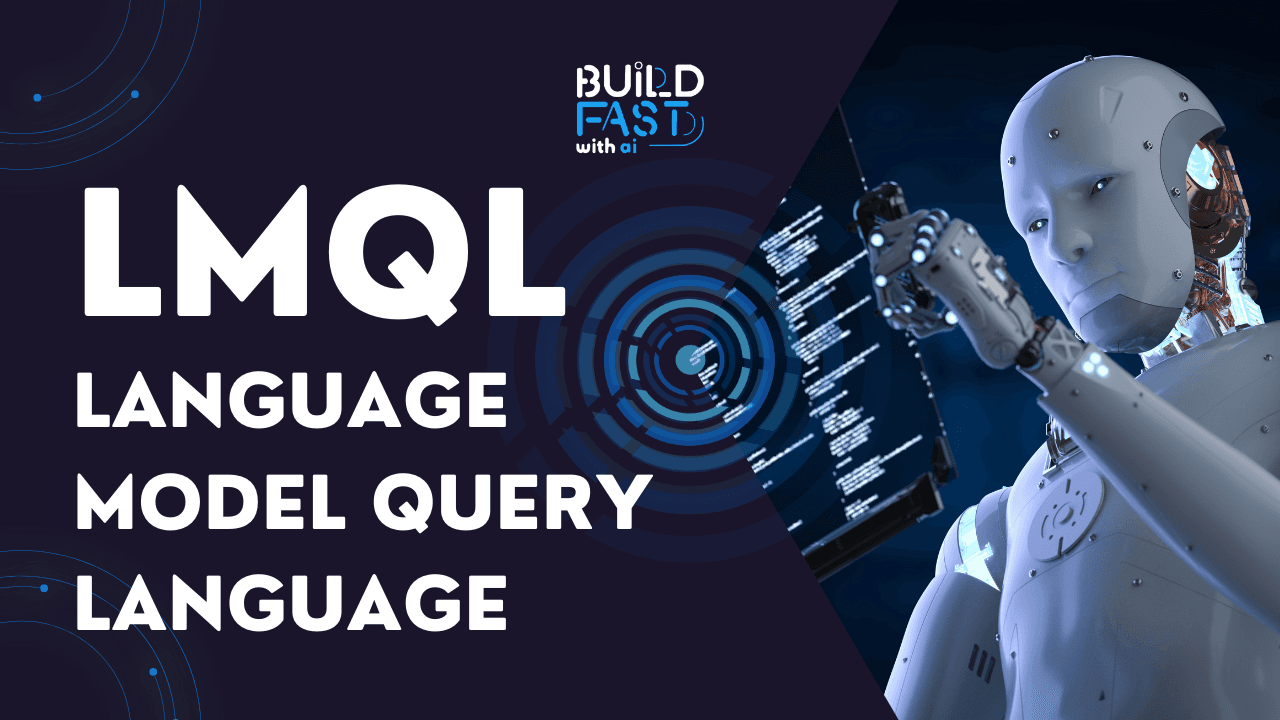LMQL: The Game-Changing AI Query Language
LMQL is revolutionizing AI-powered development, offering seamless integration with Python and LangChain. Learn how to supercharge your AI workflows with structured queries, real-time streaming, and multi-model support. Don't get left behind—unlock LMQL’s full potential today!

Will you let today’s opportunities slip by, or act decisively?
Join Gen AI Launch Pad 2025 and make your vision real.
Introduction
Language Model Query Language (LMQL) is an open-source programming language designed to seamlessly integrate Large Language Models (LLMs) into Python applications. It extends Python syntax, allowing developers to construct dynamic, optimized, and controlled interactions with AI models. This blog post explores LMQL in depth, providing detailed explanations of its features, code snippets, expected outputs, and real-world applications.
By the end of this guide, you will:
- Understand the core features of LMQL.
- Learn how to integrate LMQL with OpenAI, Hugging Face, and LangChain.
- Gain hands-on experience with practical examples and real-world applications.
Getting Started with LMQL
Installation
Before diving into LMQL, install the required dependencies:
pip install lmql pip install -U langchain-community
To use OpenAI’s API, set up your API key:
from google.colab import userdata
import os
os.environ['OPENAI_API_KEY'] = userdata.get('OPENAI_API_KEY')
Basic Text Generation
Let’s start with a simple example of generating text using LMQL with OpenAI’s GPT-3.5 Turbo.
import lmql
import os
m: lmql.LLM = lmql.model("openai/gpt-3.5-turbo")
print(m.generate_sync("Hello", max_tokens=10))
Expected Output:
Hello! How can I assist you today?
Streaming Responses
LMQL supports real-time streaming of responses, enabling faster interactions.
await lmql.run("'{:user} Hello\n {:assistant}[RESPONSE]'",
model="chatgpt",
output_writer=lmql.stream("RESPONSE"))
Expected Output:
Hello! How can I assist you today?
Advanced Query Handling in LMQL
Using LMQL Queries
LMQL provides a powerful query mechanism to structure interactions with LLMs.
@lmql.query
def chain_of_thought(question):
'''lmql
"Q: {question}\n"
"A: Let's think step by step.\n"
"[REASONING]"
"Thus, the answer is:[ANSWER]."
return ANSWER
'''
print(chain_of_thought('Today is the 12th of June, what day was it 1 week ago?'))
Expected Output:
5th of June.
Use Case: This query is useful for AI-driven logical reasoning and structured response generation.
Capturing Variables Dynamically
LMQL allows dynamic variable capturing from global namespaces.
import re
a = 12
@lmql.query
def query():
'''lmql
"Tell me a fun fact about {a}: [FACT]"
return re.sub(r'\d+', '[NUMBER]', FACT)
'''
print(query())
Expected Output:
[NUMBER] is the smallest number with exactly six divisors ([NUMBER], [NUMBER], [NUMBER], [NUMBER], [NUMBER], [NUMBER]).
Use Case: This method is useful when processing dynamic data in AI-driven applications.
LMQL with LangChain
LMQL integrates seamlessly with LangChain for enhanced AI-driven workflows.
Defining a LangChain Prompt
from langchain import LLMChain, PromptTemplate
from langchain.chat_models import ChatOpenAI
from langchain.prompts.chat import ChatPromptTemplate, HumanMessagePromptTemplate
from langchain.llms import OpenAI
llm = OpenAI(temperature=0.9)
human_message_prompt = HumanMessagePromptTemplate(
prompt=PromptTemplate(
template="What is a good name for a company that makes {product}?",
input_variables=["product"],
)
)
chat_prompt_template = ChatPromptTemplate.from_messages([human_message_prompt])
chat = ChatOpenAI(temperature=0.9)
chain = LLMChain(llm=chat, prompt=chat_prompt_template)
Running the LangChain Prompt
chain.run("colorful socks")
Expected Output:
'Rainbow Footwear Co.'
Use Case: This method helps generate creative business ideas using AI.
Data Processing with LMQL
LMQL supports processing structured data using Pandas.
import lmql
import pandas as pd
@lmql.query
async def generate_dogs(n):
'''lmql
sample(temperature=1.0, n=n)
"""Generate a dog with the following characteristics:
Name:[NAME]
Age: [AGE]
Breed:[BREED]
Quirky Move:[MOVE]
""" where STOPS_BEFORE(NAME, "\n") and STOPS_BEFORE(BREED, "\n") and \
STOPS_BEFORE(MOVE, "\n") and INT(AGE) and len(TOKENS(AGE)) < 3
'''
result = await generate_dogs(8)
df = pd.DataFrame([r.variables for r in result])
df
Expected Output (Example Table):
NAMEAGEBREEDMOVEBiscuit4Golden RetrieverBiscuit loves to chase their own tailDianne5Labrador RetrieverDianne loves to carry around a stuffed toyThor5Golden RetrieverDoes a backflip when excited
Use Case: This method is useful for AI-generated structured data processing in applications like chatbots and virtual assistants.
Conclusion
LMQL provides an efficient way to integrate Large Language Models into Python workflows, enabling structured queries, streaming outputs, variable capturing, and integration with LangChain. Whether you're building AI-driven applications, automating content generation, or processing structured data, LMQL is a powerful tool to explore.
Next Steps
- Explore LMQL’s official documentation
- Try integrating LMQL with LangChain
- Experiment with real-world AI applications using LMQL
Resources
---------------------------
Stay Updated:- Follow Build Fast with AI pages for all the latest AI updates and resources.
Experts predict 2025 will be the defining year for Gen AI Implementation. Want to be ahead of the curve?
Join Build Fast with AI’s Gen AI Launch Pad 2025 - your accelerated path to mastering AI tools and building revolutionary applications.
---------------------------
Resources and Community
Join our community of 12,000+ AI enthusiasts and learn to build powerful AI applications! Whether you're a beginner or an experienced developer, this tutorial will help you understand and implement AI agents in your projects.
- Website: www.buildfastwithai.com
- LinkedIn: linkedin.com/company/build-fast-with-ai/
- Instagram: instagram.com/buildfastwithai/
- Twitter: x.com/satvikps
- Telegram: t.me/BuildFastWithAI
AI That Keeps You Ahead
Get the latest AI insights, tools, and frameworks delivered to your inbox. Join builders who stay ahead of the curve.

